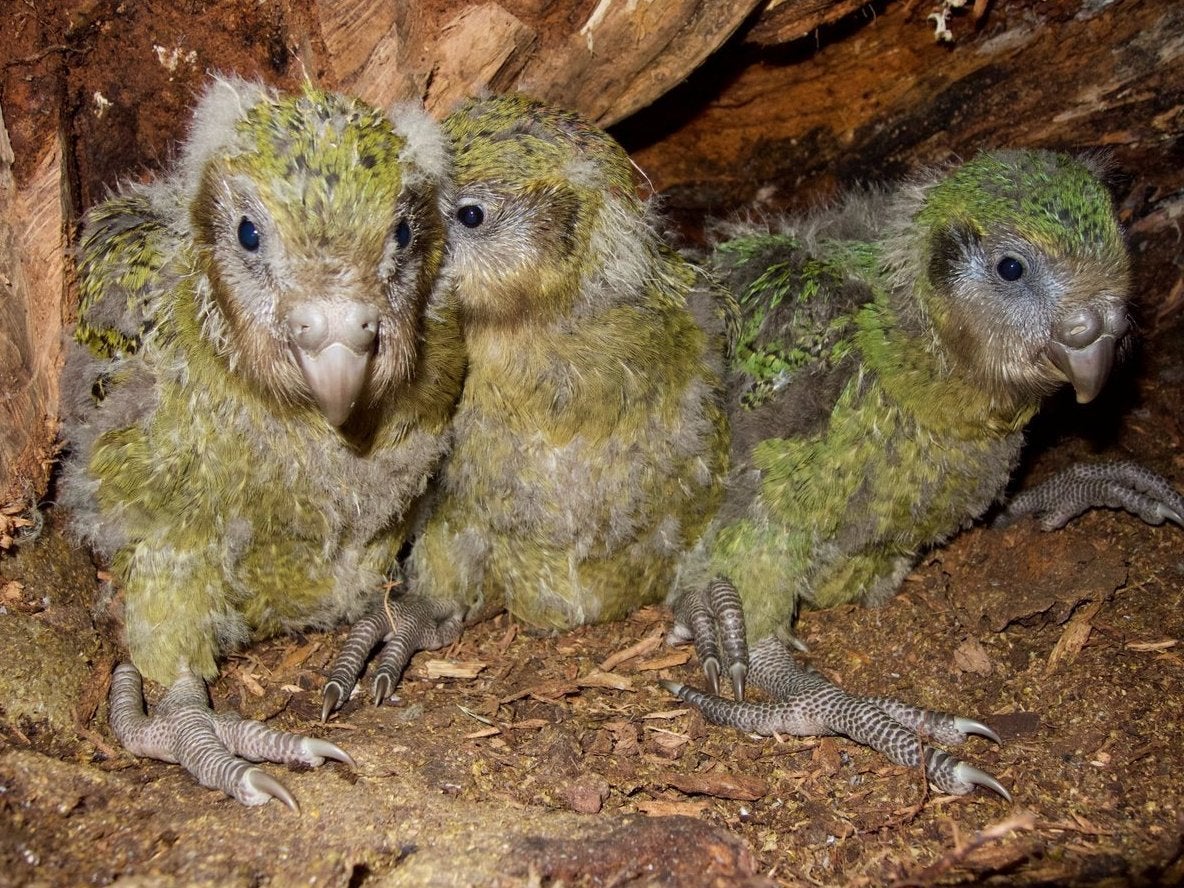New Zealand’s endangered flightless parrot numbers highest in 50 years thanks to artificial insemination
Fifty-five chicks were born with help of fertility treatment in most-recent breeding season, reports Lamiat Sabin

The population of an endangered parrot native to New Zealand has been boosted to an almost 50-year high by the use of artificial insemination.
The kakapo is a flightless nocturnal parrot – it’s name meaning “night parrot” in Maori – that is treasured by the Ngai Tahu tribe on the South Island, and is a species unique to the country.
Kakapo have low fertility rates. This year, only 77 out of 141 eggs had been found to be fertile.
They breed only every two to four years, when the rimu trees produce enough fruit, and their numbers are also endangered by the chicks getting “themselves into high-risk situations” that could cut their lives short.
The kakapo population has increased from 197 to 252 during this year’s breeding season with the use of artificial insemination.
A total of 55 chicks have been born via this procedure, a massive increase from the five chicks between 2009 and 2019.
Forty-nine of these chicks were raised in a nest and six were fully hand-reared, according to the Department of Conservation (DOC).

Conservation minister Poto Williams said: “There is an all-hands-on-deck approach to saving kakapo.
“This has been the second biggest breeding season, leading to the highest number of birds since the 1970s, but we can’t take our eye off the ball.
“The season’s 55 kakapo chicks were added to the official population only when they reached 150 days old.
“The chicks generally get themselves into high-risk situations, and occasionally need to be rescued from clumsy episodes, such as getting stuck in mud or getting their legs caught in trees.”
Tane Davis, the Ngai Tahu representative for the Kakapo Recovery Programme since 2005, said: “Our vision for kakapo is to grow their numbers and ensure they can live freely in a natural environment.”
All of the 252 kakapo are named and tagged, and live on four small islands off the coast of New Zealand that have been cleared of predators.
Their number dwindled after British colonialists introduced cats, rats, ferrets and stoats after the kakapo already suffered from over-hunting.



Join our commenting forum
Join thought-provoking conversations, follow other Independent readers and see their replies
0Comments